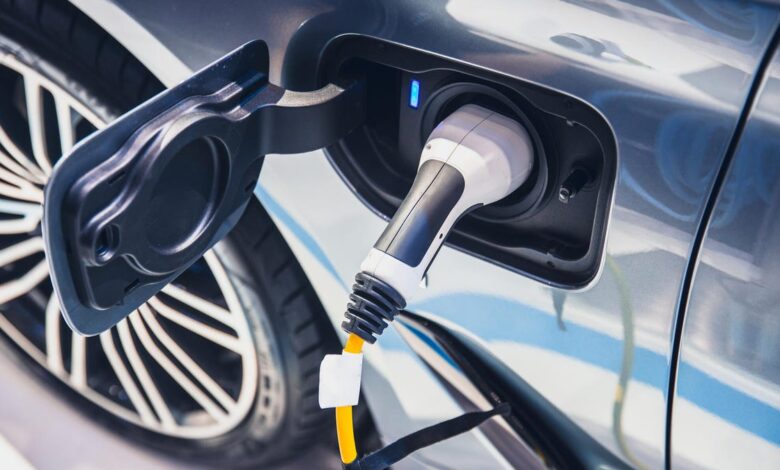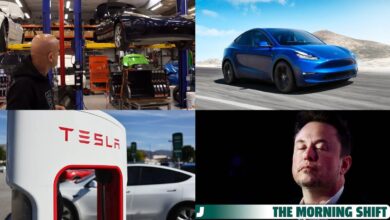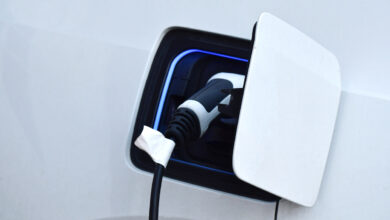There’s Now 1 EV Charging Station for Every 5 Gas Stations in California

Drivers of electric vehicles in California now have a lot more public places to stop for some juice instead of being strictly tethered to their home EV chargers. The state is hoping that this boost in convenience and accessibility may encourage more drivers in the Golden State to go electric.
In video posted to X on April 27, Gov. Gavin Newsom drives up to what he calls a Tesla “super charging station” in a car made by a different brand to announce that Tesla is now allowing about 10,000 of these chargers to be used by other manufacturers’ vehicles.
“Twenty-five percent of all new vehicle purchases in this state are now electric vehicles,” Newsom said. “California dominates in this space. We want to maintain that leadership, maintain that dominance, as we transition from dirty tailpipes to a low-carbon, green growth future.”
Having fast, public access to EV charging is of increasing importance. California and other states have enacted tighter emissions laws and tax credits in hopes of getting environmentally damaging gas cars off the road in favor of zero-emission electric vehicles. It’s also crucial to climate activism in the US as a whole.
In 2022, the Department of Transportation and the Federal Highway Administration released a proposal to build 500,000 new public EV charging stations in five years. Tesla Superchargers, Electrify America and EVgo chargers provide a level of charge called DC fast charging, which can boost a vehicle from 10% to 80% in under an hour, while Level 2 home chargers need to recharge overnight to do the same.
Read more: 2024 Will Be the Year We Figure Out EV Charging
An accompanying release issued by Newsom’s office states that California now has about 105,000 public EV charging stations, or one for every five gas stations. The state purchases enough zero-emission vehicles to rank fourth in the world if it were a country, with sales behind only China, the entire US (where California represents 34% of total sales) and Germany. About 500,000 zero-emission vehicle drivers in California own home chargers.
In 2020, Newsom signed an executive order for all new car sales to be zero-emission by 2035. Eight states quickly followed suit, displaying the influence that California’s green direction has had on the rest of the country.
“Our cars shouldn’t make wildfires worse — and create more days filled with smoky air,” Newsom said at the time. “Cars shouldn’t melt glaciers or raise sea levels, threatening our cherished beaches and coastlines.”
Read more: These Are the Most Efficient Electric Cars and Trucks Available Today



